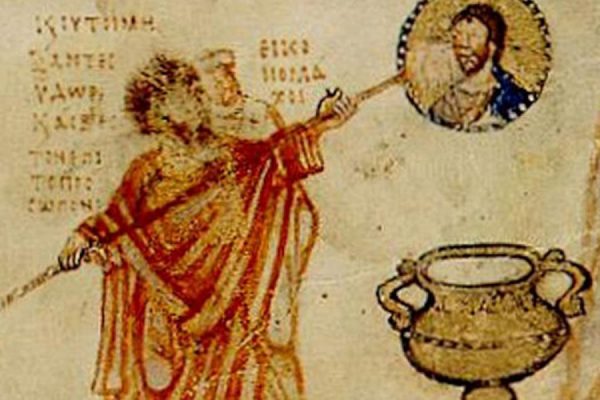
On Iconoclasm, Part One
Let me briefly define things here, then offer a few prefatory remarks. Simply put, iconoclasm – in a religious context – literally means “image-breaking”. It has to do with destroying or removing religious images. Related terms include:
-Iconodulism = the religious veneration of religious icons
-Aniconic = without idols or images
Rightly or wrongly, both the veneration of icons and images, and opposition to them, have occurred throughout church history. My qualifications here are these: I make no claim to being an art expert, and I am not an authority on church history. But I am keen on both, along with theology and biblical studies. So an issue like this is worth focusing on, although it is admittedly very complex and rather involved.
![]() To do justice to it, it needs to be broken down a bit. Here I will concentrate on the commandment against graven images which plays such a large role here. Other articles will look at the history of icons and iconoclasm. And another piece or two will look at the Reformers and their view on things like church images, art and architecture.
To do justice to it, it needs to be broken down a bit. Here I will concentrate on the commandment against graven images which plays such a large role here. Other articles will look at the history of icons and iconoclasm. And another piece or two will look at the Reformers and their view on things like church images, art and architecture.
The Second Commandment
Leaving aside here the somewhat differing divisions of the Ten Commandments by Jews, Catholics and Protestants (some see Exodus 20:3-6 as one commandment, not two, and divide the final commandment into two ‘no coveting’ commandments), we can simply refer to this as the second commandment. It says (in Exodus 20:4-6):
You shall not make for yourself an idol in the form of anything in heaven above or on the earth beneath or in the waters below. You shall not bow down to them or worship them; for I, the LORD your God, am a jealous God, punishing the children for the sin of the fathers to the third and fourth generation of those who hate me, but showing love to a thousand [generations] of those who love me and keep my commandments.
This commandment is also found in Deuteronomy 5:8-10. So what exactly is being prohibited here? It is primarily about making an image of God and of worshipping any such images. God is God – no one is like him. Nor can any image properly represent him.
And God already has divine image-bearers: mankind. We are the ones who are to model what God is like. As Christopher Wright says about the Deut. 5 version of the second commandment:
Yahweh is the living God, and any carved statue is necessarily lifeless. Something that can do nothing is no image of the God who can do all things. The only legitimate image of God, therefore, is the image of God created in his own likeness – the living, thinking, working, speaking, breathing, relating human being (not even a human statue will do, but only the living person).
And of course Christ himself is God, and the very image of God (2 Corinthians 4:4; Philippians 2:5-6; Colossians 1:15; Hebrews 1:3). So there can and must be no other image of God. But it is the issue of worship that is especially being stressed here.
Mark Rooker says in his book on the Ten Commandments, “The second commandment prohibits any crafted or sculptured image for worship.” And as T. Desmond Alexander comments, “The second ‘word’ in the Decalogue concerns the making of an idol with the intention of becoming subservient to the god represented by it.”
Or as Kevin DeYoung says in his brand-new book on the Ten Commandments, “If the first commandment is against worshipping the wrong God, the second commandment is against worshipping God the wrong way. . . .Most generally, the second commandment forbids self-willed worship – worshiping God as we choose rather than as he demands.”
The issue of worship is crucial. God is the Creator and he is forever distinct from the creature. When Moses shared this commandment with the Israelites, such worship of images was the norm. In the Ancient Near East physical images of the gods were widespread and fully sanctioned. Israel was to have none of this. As Philip Graham Ryken writes:
In all the surrounding cultures using living things of various kinds as images of the gods was commonplace. The Israelites were not allowed to represent God in the form of anything in all creation. Remember that the Israelites had been living with the Egyptians, who worshiped many gods, nearly all of which they represented in the form of animals. The god Horus had the head of a falcon, the god Anubis had the head of a jackal, and so on. When it came to the Egyptians and their idols, any animal was fair game! But the God of Israel refused to be represented in the image of any of his creatures.
The whole problem here is really that of idolatry. As Albert Mohler says about this commandment:
We are homo-idolater, the creature who would fashion our own god. This is the true perennial heresy. . . . Why are fallen sinful human beings born idolaters? The reason is simple – we must worship, we will worship. Even as nature abhors a vacuum, so does the human soul. The human soul will find an object of worship, either on the shelf, on the altar, in the mirror, or in heaven. We are born idolaters….
We are natural-born idolaters, and we will commit idolatry. We will worship, even if we do not recognize that we are doing so. . . . To be created in the image of God is to be made a worshipping being.
Or as G. Campbell Morgan put it:
It is as impossible for a man to live without having an object of worship as it is for a bird to fly if it is taken out of the air. The very composition of human life, the mystery of man’s being, demands a center of worship as a necessity of existence. All life is worship. There may be a false god at the center of the life; but every activity of being, all the energy of life, the devotion of powers—these things are all worship. The question is whether the life and powers of man are devoted to the worship of the true God or to that of a false one.
The problem of idolatry is just as real today as it was back then. As Michael Horton says about the first commandment:
It is rarely declared but often practiced: God is in charge of the area called ‘religion,’ but life itself is ruled by a pantheon of deities: career, possessions, greed, self-esteem, family, friends, entertainment, fashion. Whenever we make a decision to violate God’s revealed will in favor of one of these ‘deities,’ we are putting other gods before the one true and living God.
That is why it is so important that we worship the one true God only, and avoid any man-made images of him. And it is not just material images of God that is being spoken about here. Mental images of God can as easily become idols – false gods. So this commandment urges us to also think properly about God.
As J. I. Packer has rightly said, this commandment “forbids, not worshipping many gods (the first commandment covered that), but imagining the true God as like yourself or something lower. God’s real attack is on mental images, of which metal images are more truly the consequence than the cause.”
We are just as quick to fashion mental images of God – but they end up being false gods. As C. S. Lewis famously said about this in A Grief Observed: “Images of the Holy easily become holy images – sacrosanct. My idea of God is not a divine idea. It has to be shattered time after time. He shatters it Himself. He is the great iconoclast.”
This is true even in something like Christian prayer. As Lewis said in a letter to a friend on this matter:
The prayer preceding all prayer is “May it be the real I who speaks. May it be the real Thou that I speak to.” Infinitely various are the levels from which we pray. Emotional intensity is in itself no proof of spiritual depth. If we pray in terror we shall pray earnestly; it only proves that terror is an earnest emotion. Only God Himself can let the bucket down to the depths in us. And, on the other side, He must constantly work as the iconoclast. Every idea of Him we form, He must in mercy shatter.
One final issue needs to be mentioned here. It must be pointed out that this commandment is not a prohibition of art in all its forms and varieties. Scripture allows for sculpting and painting of images of living things, as the artwork on the temple makes clear (see for example 1 Kings 7:18-20).
Indeed, we have whole chapters of the Old Testament devoted to the matter of artistic design and craftsmanship of the tabernacle and the temple. See these passages for example: Exodus 25-31; 35-40; 1 Kings 6-7; 1 Chronicles 22:14-16; 29; 2 Chronicles 2-4; and Ezekiel 41.
There certainly is a place for art in the life of God’s people. But for more on the issue of art and the second commandment, see here: https://billmuehlenberg.com/2017/04/11/art-second-commandment/
So the second commandment is a key text to examine when we consider the issue of religious images and icons, and how we should consider them. Are we to be iconoclasts or iconodulists? If we do start clearing out various religious images, how far should we go?
And is it only in places of worship that we do this? And what about religious art in general, including things like depictions of Christ? Plenty more such questions arise here, and in part they will be answered as we look at 2000 years of church history, and how such matters have been handled over the centuries.
That is where future articles will come into play. So stay tuned.
[1653 words]

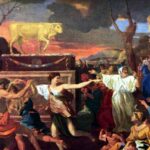

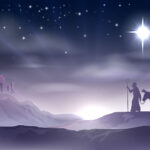
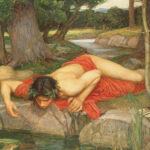







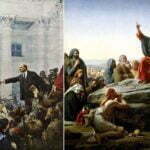



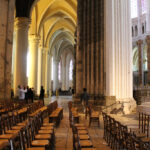
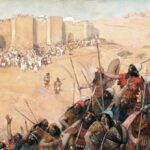

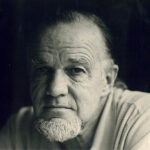
Hi Bill,
I love your work and your ministry! Some years ago I visited the Vatican with images everywhere and noted in particular the attention paid toward the bronze statue of St. Peter. The second commandment came to mind as I saw one grief stricken lady grasping hold of the worn right foot and weeping as she gazed up into the face of the lifeless image.
God Bless.
Andrew
@George Grant ……… R.C. Sproul: “Dr. Schaeffer, what is your biggest concern for the future of the church in America?”
… Francis Schaeffer: “Statism.” ………… [Emplaced, Empowered and funded by deluded christians !!!! ]
https://www.facebook.com/LesserMagistrate/videos/vb.594698487256549/1737681699624883/?type=2&theater
https://www.amazon.com/Idols-Destruction-Conflict-Christian-American/dp/0891077383/ref=sr_1_1?s=books&ie=UTF8&qid=1499818827&sr=1-1&keywords=Idols+for+Destruction%3A+The+Conflict+of+Christian+Faith+and+American+Culture
The running dispute between Iconoclasts and Iconodules during the 8th-Century-AD Byzantine Eastern Roman Empire was so heated that Iconoclast Emperor Constantine V received the dubious “honorific” title, Copronymous (Dung-Name) from his Iconodule opponents!
First the Damascus Umayyad Dynasty, and then the Baghdad Abbasid Dynasty of Muslim empire in the Middle East presented serious threats to the continuation of the Eastern Roman Empire as a serious political force in the Middle East during the 8th Century.
Orthodox Islam has always been radically iconoclast – not even pictures of Muhammad’s face are acceptable. Muhammad himself removed hundreds of idols from Mecca’s Ka’aba shrine when he appropriated it for Islamic purposes on his triumphant return from Medina to Mecca. I am surprised that recent atrocities in Sri Lanka didn’t damage more religious statues than they did.
Muslim art has a major place for geometric or plant-derived decorative patterns. Muslim calligraphy weaves words from Qur’an into the shapes of inanimate and plant-life objects. Portrayal of animals and people in graphic art and sculpture is regarded as “idolatry” by radical Muslims.
I agree some people give the IMPRESSION that they are worshipping statues and not God.
Plaster images of the Sacred Heart, the Blessed Mother, Saints etc in Catholic Churches are there to REMIND the worshipper of WHO the people were and HOW they lived. For example there is a lovely statue of St Joseph in St Mary’s Cathedral in Perth which is such a beautiful work of art that after seeing it it would be hard NOT to reflect on the role St Joseph played in the life of Jesus. A Carpenter in his day the statue depicts a physically strong man at his work bench. Then it is possible to reflect on how hard he worked to protect the child Jesus and his Mother and how much they would have needed him. Worshipping such an image doesn’t come into it for some Catholics. I would even claim most. If they are seen to lay their hand on one of the powerful arms of the statue and seen to say a prayer over it it is merely to ask for his intercession not to worship him as if he were God. After all he was nearer in his life to Jesus than we are. Worship belongs only to God alone.
Therefore it is better not to judge by appearances as no one can read what is really in another person’s heart. Personally, I prefer a place of worship that is beautiful to look at because in general I like beautiful things people have used their God given gifts to make. Naturally this appreciation extends into all aspects of my life.
However, I hasten to add that I realise everyone is different.
Mr Muehenberg your article was the best explanation I have ever heard of the second commandment. I was able to understand what you said so all the adult’s undoubtedly will.
Giving us the definition of a word like= Iconodulism and not expecting us to know complicated words, was exceptionally understanding of your readership. Our teacher often tells us she can see we have been so concerned about meeting the word count that we forgot we had an audience. You certainly didn’t make that error.
This is our favourite of your article so far. We do have some questions but we will save them until we read your second instalment.
We can see now why it’s so complicated as the interpretation of what is considered as an object of worship and what is not isn’t as simple as say a statue. I had never heard that so-called images of Jesus were in violation of scripture before, even Sarah didn’t know this as she commented a lot of Christian books have images that would violate scripture. I was very interested in us being the closest thing to the image of God. Sarah said that it doesn’t mean we look like God but we have very limited attributes of God such as we can think God. I had not heard that before either is that your understanding.
When are you going to do part two Sir?
Molly M and the Bible girls.
Thanks again Miss M and the B girls. But wait a minute! The skies are blue, the birds are chirping, but now the pressure is on to get Part Two out! Will I never see the great outdoors again? Will I be forever confined to this dark and dingy room, forever chained to this computer, to keep those articles rolling out, just to keep those B girls happy?! Hmm, time to resist their siren calls and head outside. After all, Crazy Daisy and Silly Jillie always want more walks.
Re: Patricia Halligan’s Roman Catholic explanation.
I appreciate that visual imagery can be a reminder to us and I can recall a previous church which had a basic seascape and verse behind the pulpit which could act as a focal point – Psalm 46:10a I think. I tend to think of medieval type pre-literate societies as benefiting more by reminders of what they have been taught – though it was during that period that iconoclasm arose, but are there boundaries on that beyond debate over the 2nd Commandment or is it more cultural\stylistic differences? For myself I don’t know what a sacred heart is, and neither Mary nor saints have been included in any imagery or physical reminders at the churches I can recall attending. Some have had a bare wooden cross, and one that was more high church included an altar or somesuch with a very large ornate Bible up front where another church would have it’s pulpit, plus a national flag off to the side of the pulpit on that side of the church. All in all a far cry from the extensive statuary and imagery of some denominations! While Roman Catholics many not see their relationship with statues and images as worship, and don’t see praying over them as problematic, that view isn’t universal, or clear. The only intercessor is Christ, though we do at times ask friends, family, and fellow Christians to intercede or pray for things, but to ask for those in Heaven to intercede on our behalf seems polytheistic. I’m sure Roman Catholics don’t see it so but I guess this is one of those major denominational differences? On the other hand, and as noted in Muehlenberg’s previous article, many evangelical churches are not even including a cross in their design so if it were not for a sign saying ‘church’ you’d drive past never knowing the building was Christian. Is it possible to go too far with iconoclasm and make that an icon in it’s own right?
Oh and regarding Miss Mountford and the Bible girls’ point about images of Jesus violating Scripture, either I’m misunderstanding their point, or they misunderstood something in this article. Jesus was born human so a representation of Him isn’t an automatic fail of the 10 Commandments. Like them however I do think it a very interesting point about humanity -more accurately Christ, being the closest image of God. Scripture says we were created in His image, but I always make a distinction between visual imagery and the non-visual likeness of Creation. I’m not quite sure how to reconcile the 2 concepts. Idol at least is easier to understand as something that needn’t be tangible.
Giggles, hugs and kisses to Crazy Daisy and Silly Jillie.
Molly? and Milly ?
The only legitimate image of God, therefore, is the image of God created in his own likeness – the living, thinking, working, speaking, breathing, relating human being (not even a human statue will do, but only the living person).
We took the above to mean what we said Mr Mason Sir.
Molly & Milly.
?????????? < these should be little hearts.
I have just read Calvin on ikonodoulia. He is highly polemical against the proclamations of the council called by Empress Eirene on the matter. He rubbishes the purported distinction between doulia and latreia, making the point that pagan worshippers were not actually worshipping the stone god but were reverencing the god through the stone artifact. So the Reformers were not unaware of the distinction — they just had no truck with it.
However, the Incarnation changed the rules. I am happy to go with Eirene’s council’s teaching. Within Orthodoxy (I am EO) iconography is bounded by very strict rules.
When I have the misfortune to get dragged into modern churches and see the worship given to the drum kit, I am more concerned about idolatry than when I enter an Orthodox church. Some RC practices, however, give me qualms.
Hi Bill. Is part two on the drawing board (or keyboard) yet? I’ve been watching and waiting for it. Blessings.
Thanks Kerry. Hopefully it is still coming! Because this topic is one part of some much bigger topics – including our understanding of Orthodox faith and practice – it cannot really be discussed in isolation from that bigger picture, so I am working on several pieces here at the moment.